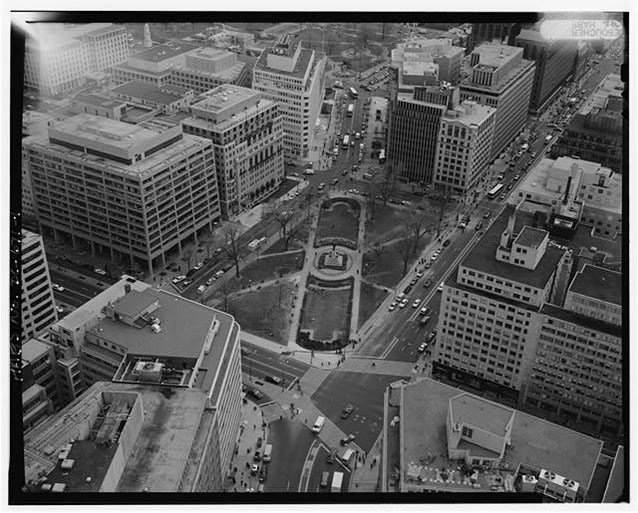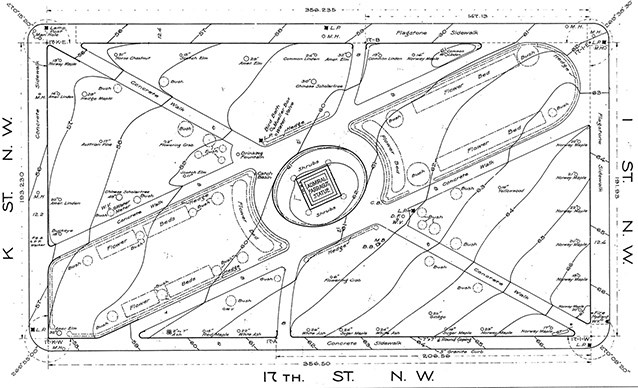Last updated: October 12, 2021
Article
Farragut Square Cultural Landscape

HABS, Library of Congress

NPS (2004)
High-rise office and commercial structures surround the park on all sides. The main focal point within the park is the Farragut Monument, and the most prominent vista outside the park is the view south along the Connecticut Avenue corridor to Lafayette Park. Over 40 benches are staggered along the park walkways. All of these are new, with elaborately scrolled iron supports and arms (including two side arms and a central arm), and wooden slats.
Eight light posts stand along the walks. The posts are a modern, simplified version of a classical column, a type known as the “Washington Standard,” and support Lexan (a thermoplastic resin) versions of the standard urn-shaped “Washington Globe” lamp. New steel-slat trash receptacles are placed between the benches and around the park’s perimeter. Two new steel handicap-accessible drinking fountains are placed near the statue.
Farragut Square is heavily used. The majority of visitors are office workers walking through the park as part of their daily commute, but many people come to the park to enjoy picnic lunches or to attend concerts and movies in the summers.

NPS
The circulation system has been changed only slightly since the removal of Connecticut Avenue in 1881 – the paving materials have been altered and replaced, the two east-west spur paths were added in 1901, and the sidewalks have been widened, the west sidewalk having been done in 2004. Most small-scale features in Farragut Square have recently been replaced; as a result, few have integrity.
Quick Facts
- Cultural Landscape Type: Designed
- National Register Significance Level: National
- National Register Significance Criteria: A, C
- Periods of Significance: 1791; 1867-1934
